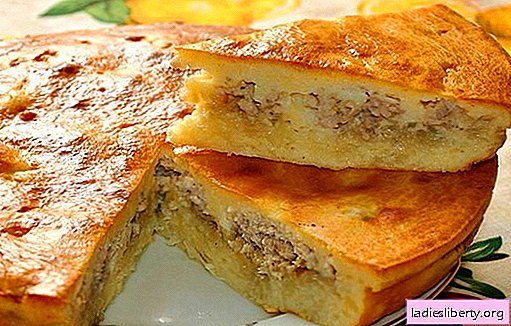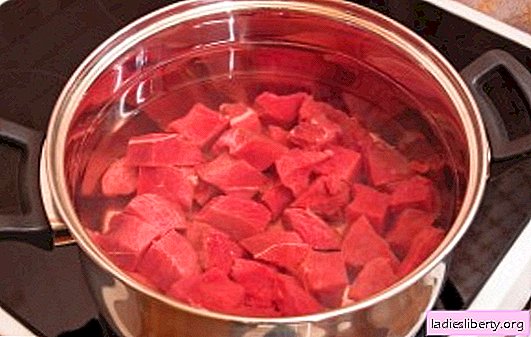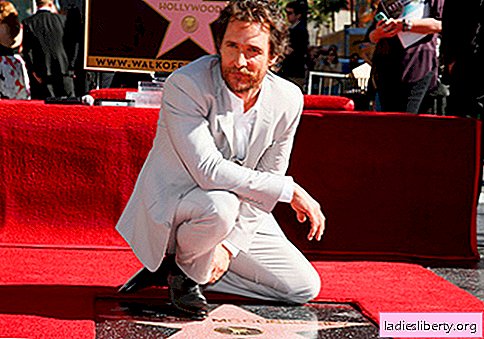
The rhythm of life of a modern person does not imply a normal, nutritious diet. In most cases, an inadequate diet is a direct path to the development of diseases of the gastrointestinal tract. In addition to the notorious and well-known gastritis, many people suffer from a rarer disease - cholelithiasis or cholelithiasis. According to various estimates, up to 15% of the population suffers from them in the population, the risk of developing the disease increases with age, and after 65 years the number of patients increases sharply to 40%.
Gallstone disease is a serious, albeit for a long time, invisible disease. Therefore, do not take it lightly. It is important to be fully equipped.
Causes of gallstones
There are many reasons for the formation of stones (calculi) in the gallbladder. Only the doctor can determine the initial factor leading to the development of the disease with accuracy. What reasons can provoke the formation of calculi?
• Hereditary factor. According to studies, a significant role in the development of cholelithiasis has a genetic predisposition. If there is a person in the family suffering from this pathology, with a probability of 35% you can get the same disease. It is about close relatives. Of course, the disease itself is not inherited. The characteristics of metabolism are transmitted. But just the metabolic disturbances are the cause of gallstones.
• The race. The racial characteristics themselves do not play a significant role. However, cultural factors, especially those related to nutrition, are of great importance. So, people from Latin America and Europe suffer from cholelithiasis three times more often than Asians.
• Gender. Women suffer from cholelithiasis almost three times more often than men because of the hormonal background. Therefore, women produce more bile necessary to neutralize the hormone estrogen.
• Peak hormonal conditions in women. Menopause, pregnancy, etc. These conditions increase the risk of the disease.
• Hormone treatment. Treatment with hormonal drugs doubles the likelihood of developing a cholelithiasis.
• The age of the person. A huge role is played by age. Children practically do not suffer from calculi. Somewhat more middle-aged patients, but the main category of patients is elderly people.
• Diseases of the gastrointestinal tract, endocrine pathology.
• Obesity.
These are just the most common causes of gallstones. There are many more.
The first symptoms of gallstones
Symptoms and signs of gallstones depend on the severity of organ damage. In general, the manifestations are as follows:
• The most characteristic of the first symptoms of gallstones is pain. Pain sensations vary significantly, depending on the cause. In the case of cholelithiasis, we can talk about simple biliary colic or about the onset of cholecystitis. In the first case, the pain is moderate in intensity, dull or aching. It is localized in the right side of the abdomen, two fingers to the right of the epigastric region. It is accompanied by a feeling of heaviness in the stomach. In addition, it lasts no more than three hours, begins daily at almost the same time and intensifies after ingestion.
A completely different nature of pain with cholecystitis. Pain sensations are cutting and persist for a long time (days, weeks).
• Nausea and vomiting. Frequent companions of the patient with cholelithiasis.
• Phenomena of general intoxication of the body. Among them, a rise in body temperature, headache, weakness, weakness. These are signs of gallstones complicated by cholecystitis.
• Bloating, diarrhea, heaviness in the abdomen, heartburn, belching. These symptoms themselves are not manifestations of gallstones. Their cause is stomach problems. But the root of evil lies precisely in the problems with the gall bladder.
• As the course of the disease becomes more complicated, the development of so-called obstructive jaundice is possible. With the flow of blood, bile, which cannot pass through the gastrointestinal tract, is distributed throughout the body and tints the whites of the eyes and skin yellow.
• For the same reasons, feces become yellowish-white. The consistency is sticky. This happens due to concomitant damage to the pancreas.
• Severe pains in the right side under the ribs, which do not stop after taking analgesics, should alert the patient. This may be a symptom of an infectious lesion of the gallbladder, which frequency acts as a complication of cholelithiasis. In addition to pain in this case, symptoms of general intoxication of the body, vomiting and diarrhea are added. These are terrible manifestations, with which you need to urgently seek medical help.
Diagnosis of gallstones
Diagnosis of gallstones begins in the office of a treating specialist. A doctor dealing with gastrointestinal tract problems is a gastroenterologist. It should be addressed to him.
At the initial consultation, the doctor will begin interviewing the patient for complaints and their nature: what hurts, how, when, when it started, etc. After collecting an anamnesis (as it is called in medical language), it is the turn of physical examination or palpation.
The doctor feels the place where the gall bladder is located and asks the patient to evaluate the pain reaction. In addition, in this way, a specialist can evaluate the structure and size of the liver, which also often suffers from gallstone disease.
Diagnostics is mainly instrumental. Laboratory methods are uninformative.
The most informative is ultrasound. It makes it possible to assess the state of the gallbladder and identify sand and stones in the structure of the organ.
If the ultrasound does not provide any valuable information, the controversial issues are resolved by CT diagnostics or echo endoscopy.
With calculi in the gallbladder, it is also important to assess the functional state of the organ. For these purposes, scintigraphy is prescribed (a study similar to MRI).
Together, these methods are sufficient for an accurate diagnosis.
Treatment of gallstones
In most cases, the treatment of stones in the gallbladder proceeds without pronounced symptoms. In this case, only one dynamic observation is enough: this means that doctors take wait-and-see tactics and monitor the course of the process. In this case, general supportive therapy for the gallbladder and liver is prescribed:
• Analgesics. For the relief of pain with cholecystitis and colic gallbladder.
• Herbal preparations to support the liver.
• Hepatoprotectors: to protect the liver from the adverse effects that are possible with cholelithiasis.
In more severe cases, surgery can not be dispensed with. Doctors do not risk starting with it, relying on dynamic observation, but when the symptomatology becomes apparent, the operation cannot be refused.
Abdominal operations are increasingly fading into the background, giving way to minimally invasive laparoscopic. This allows you to abandon traumatic procedures in favor of minimally invasive, significantly reducing the risk of complications and the postoperative period of rehabilitation.
Gallstones prophylaxis
There are several ways to reduce the risk of calculi in the gallbladder:
• Optimize your diet. The main type of gallstones is cholesterol. They are formed with excessive consumption of animal fats. Therefore, it is worthwhile to reduce their consumption and introduce as many plant products as possible into the diet: vegetables, fruits, etc.
• Exclude choleretic products and agents for diagnosed cholelithiasis: apples, etc.
• Eat often (5-7 times a day) in small portions.
• Maintain a moderate level of physical activity.
Together, these methods will allow avoiding calculi in the gallbladder or, if the problem already exists, reduce the risk of complications and exacerbate the course of the disease.
Gallstones are far from being as simple as they might seem. This is a serious disease that can lead to a lot of complications, even death. Therefore, you should not neglect your health. At the first symptoms, it is recommended to consult a doctor immediately.











